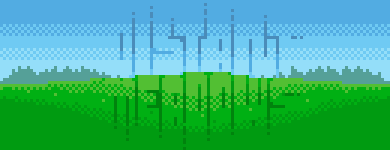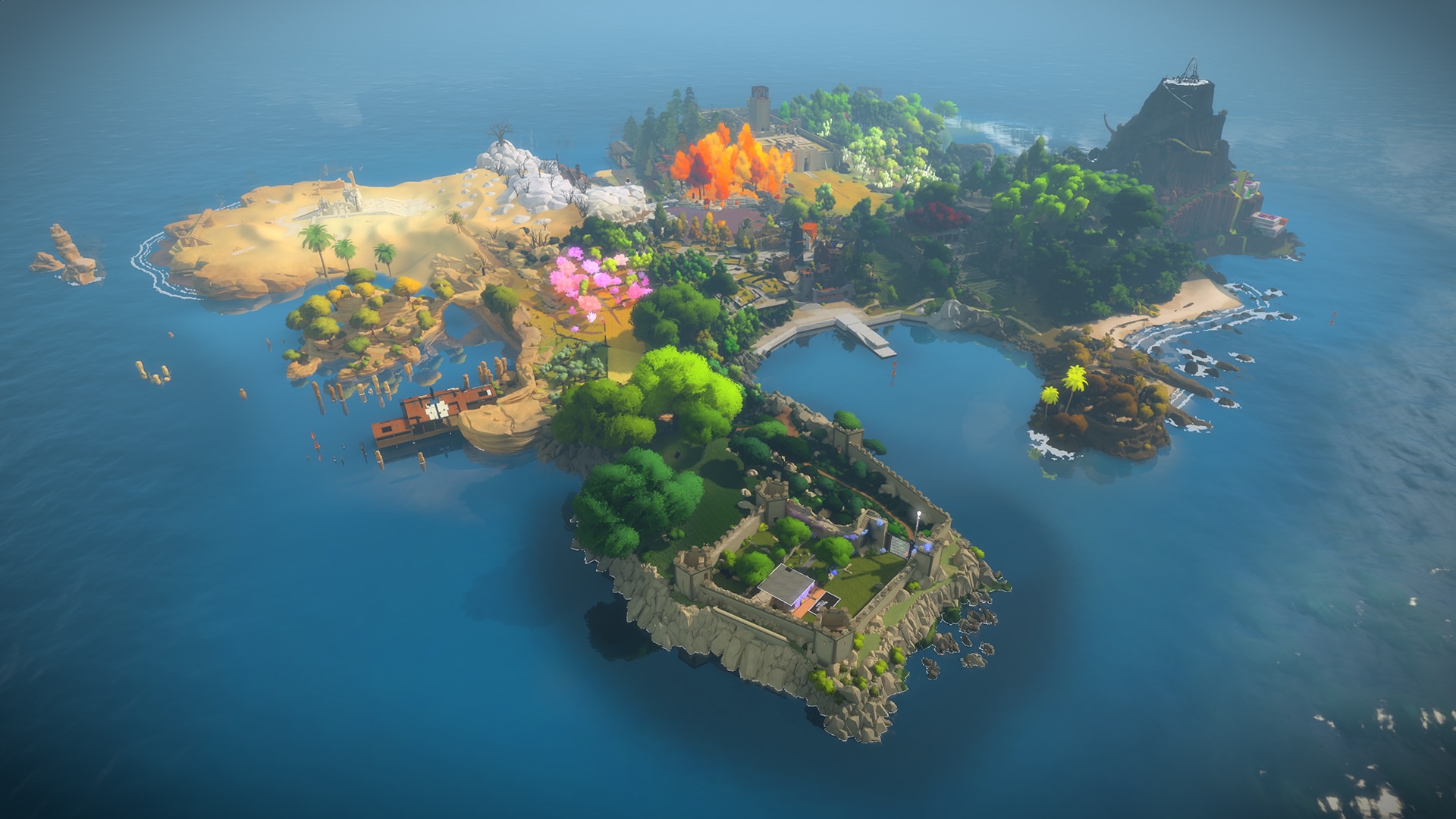On the occasion of our first production, an open world puzzle game called Waters of Sal Naména, we would like to take a look at a brand-new genre emerging in the gaming industry: the Metroidbrainias.
Since the success of The Witness in 2016 and Outer Wilds three years later, the term has increasingly fought its way into the consciousness of gamers, primarily within the indie scene, to summarize the type of games that focus on knowledge-based progression structures. Full-fledged Metroidbrainias are typically adventure games (2D or 3D) that focus on the exploration of their branching, freely navigable game world through the impartation and retrieval of in-game knowledge. Whereas progress in original Metroidvanias — typically two-dimensional side-scrollers where the player navigates through the tunnel-like passages of a large, interconnected game world — is dependent on the consecutive acquiring of abilities and tools, a Metroidbrainia eschews such system-based unlockables and instead completely entrusts quantifiable amounts of carefully portioned insights into the players’ minds.
Thus, an inaccessible area within a typically complex, interconnected level structure can only be reached once the workings of an associated gatekeeper — such as a locked door or barrier — have been discovered. Crucially, the ability to unlock such new game sections is usually inherent in the player from the outset in the form of his options of action. It is solely the knowledge of the unlocking mechanism that serves as the key to the corresponding lock. Therefore, it is clear that theoretically, the player could stroll directly to the goal from the first minute — if they knew how! The principle of ‘Metroidbrainia’ aims to ensnare the player in a vortex of knowledge acquisition and retrieval fueled by fascination and surprise. Insights into navigating the scenery, one’s own abilities, or the existing NPCs steer the regulated game progression, as opposed to the deliberate bestowal of the mentioned abilities and tools in a Metroidvania.
With this type of key-lock principle come significant changes in design possibilities: Once played through, the essence of the gaming experience could only be re-experienced in a second run if the player forgot the gained knowledge. The developer sacrifices replay value to some extent, but finds a valuable asset in the quantities of insight: the targeted staging of which holds the potential for actual epiphanies, i.e. sudden, consciousness-expanding revelations. These form the highly-concentrated mental equivalent to the continuous gain in physical skill in a reaction-based action game and are enthusiastically described elsewhere as Eureka moments. Epiphanies can broaden horizons and shake up paradigms — and suddenly cast the familiar world in an entirely new light in a split second.
The generic motif of Metroidbrainias lends itself excellently to detective games, walking simulators, story-driven adventures, and time-loop narratives. If consistently implemented and elegantly designed, it is even possible to completely forgo a saving system and still maintain a standard game length of up to several dozen hours. A prerequisite for this is to implicitly reconstruct previous progress from the player’s mind with each gaming session, for example, by bridging shortcuts to the previous status quo, that can only be utilized with the appropriate knowledge. In this context, the following rule of thumb could help identify this novel game genre: The less game progress is saved or would need to be saved by the system and the more is instead left to the player’s memory, the more ‘Metroidbrainia’ is ingrained in the DNA of a game.
These days, more and more people are talking about Metroidbrainias. They are highly appreciated; the demand for more is greater than ever. The fascination and appreciation for Metroidbrainias and particularly the challenges associated with their demanding game design inspire us to embark on our own interpretation, which we are currently working on with great enthusiasm. We hope for the best — not only for our own project but for the holistic development of the genre. And of course, we also hope that Steam will eventually introduce a corresponding genre tag. 😉
Some games with consistent Metroidbrainia design throughout the entire game:
Some games containing Metroidbrainia elements:
If you know of any more games that are fully or partially Metroidbrainia, please mention them in the comments along with a brief explanation of their Metroidbrainia elements, so we can complete our list. Thank you! 🙂


Leave a Reply